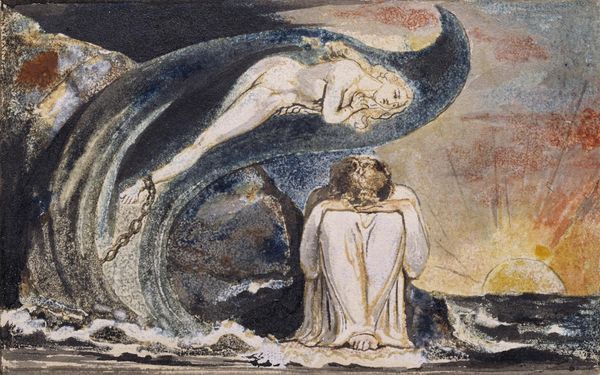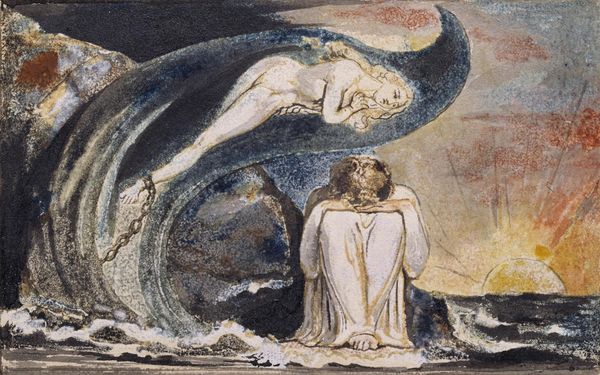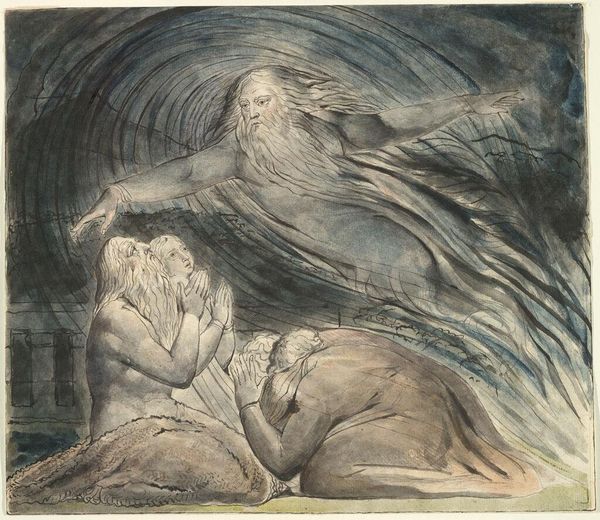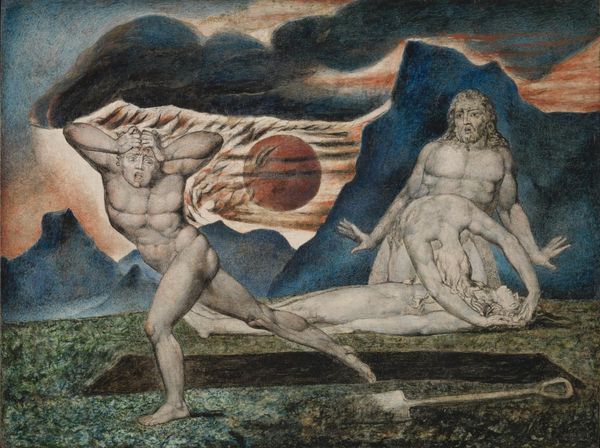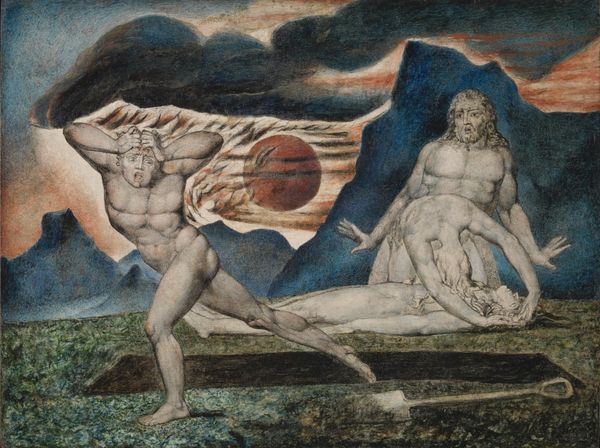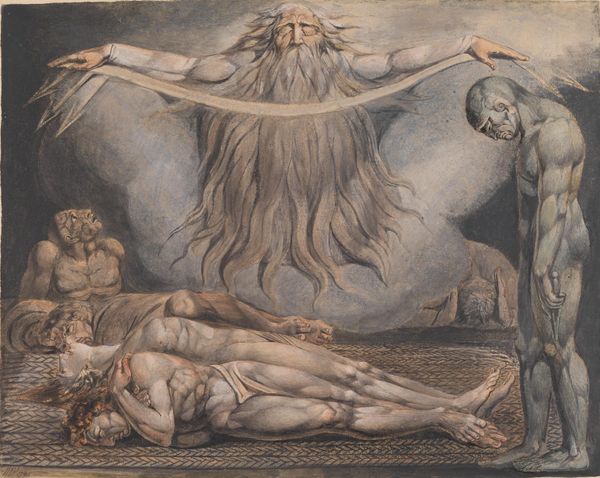
Dimensions: support: 600 x 441 mm frame: 775 x 623 x 70 mm
Copyright: NaN
Curator: William Blake's "The Bard, from Gray," currently housed at the Tate, presents a striking visual tableau. Editor: It's heavy, isn’t it? The composition feels weighed down by grief and despair. The chains certainly add to that. Curator: Indeed. Blake was deeply interested in the political and social climate of his time. This work likely alludes to the suppression of Welsh bards by Edward I, a potent symbol of cultural oppression. Editor: The dynamism of the brushstrokes, the swirling blues juxtaposed with the stark white figure of the bard… it creates an intense emotional atmosphere. One could interpret the figure above as a muse, or a spectral vision. Curator: Precisely, the spectral figure offers a counterpoint, perhaps representing inspiration or the enduring power of art against tyranny. Blake often uses such visual contrasts. Editor: Pondering the interplay between historical context and Blake's visionary language grants a deeper understanding of this work. Curator: Agreed, it highlights how history and art intertwine to shape our understanding of power and resilience.
Comments
tate 7 months ago
⋮
http://www.tate.org.uk/art/artworks/blake-the-bard-from-gray-n03551
Join the conversation
Join millions of artists and users on Artera today and experience the ultimate creative platform.
tate 7 months ago
⋮
Blake saw the Bards as his forerunners; they sang of loss, the future, and nationhood. This tempera has greatly altered since it was painted. Blake used a very thin, white, preparatory layer of chalk and glue. This was impregnated with more glue during a conservation ‘lining’ treatment more appropriate to an oil painting. This reduced the effect of transparent colours over a white background, and displaced some details painted in shell gold. Blake’s paint medium has also darkened greatly. The opaque red vermilion used for the line of blood, glazed over with madder lake, has survived better than blue areas. Gallery label, September 2004
